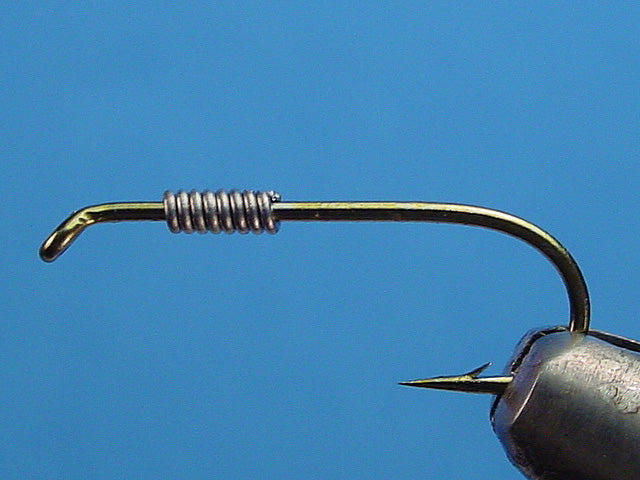Pattern Description:
The Stillwater Nymph is a pattern from lake fishing guru, Denny Rickards. This pattern has always intrigued me. It seems as though it can be taken as a scud, damsel nymph, callibaetis nymph, leech or even a small minnow. Flies that cross over and imitate a variety of food forms are always attractive to me because they let you pick one fly and concentrate on the fishing rather than switching back and forth between ten patterns. This pattern is really a pretty simple variation on a wooly bugger and does not require any advanced tying skills. I have tied a bunch of different color and size variations in preparation for spring. I can’t wait to use them. Tie a few up and stash them in your box, patterns like this are handy to have around when you encounter a hidden lake or pond and don’t have any stillwater-specific patterns with you.
Materials Needed:
Hook: TMC 5262 or 5263 #10-16
Weight: Lead Wire, sized to hook
Thread: UNI 6/0 Olive
Tail: Olive Marabou
Shellback: Olive Marabou
Rib: Copper Wire
Hackle: Grizzly Dyed Orange
Body: Olive Seal Dubbing Substitute
Step 1
Wrap six to eight turns of lead wire around the front of the shank. Be sure to leave about two hook eye lengths of bare shank in front of the lead.
Step 2
Attach the thread and wrap a base over the lead wire and hook shank all the way back to the bend.
Step 3
Peel a sparse clump of marabou off the quill and dampen the fibers to hold them together. Tear the tips off the marabou with your fingernail to even up the ends. You don’t want them to look square cut, just a little more even than as they come off the quill. Measure this clump against the hook so it is about a shank length long.
Step 4
Tie the marabou in at the bend with the tips extending out about a shank length. Wrap forward over the butt ends up to the front end of the lead wraps and clip the excess.
Step 5
Peel another sparse clump of marabou from the quill and tie it in by the tips at the mid-point on the shank. This clump will form the shellback on the fly.
Step 6
Wrap back over this clump of marabou to the bend, taking care to keep it on top of the shank.
Step 7
Return the thread to the middle of the hook and tie in an eight-inch length of copper wire. Wrap over the wire with the thread back to the bend.
Step 8
Select a grizzly dyed orange saddle hackle that has barbs equal to about one and a half hook gaps. Prepare the hackle by holding it by the tip and stroking the fibers down toward the base and out away from the quill.
Step 9
Grasp the tip of the feather in your material hand and pull the hackle fibers back toward the base as shown.
Step 10
Hold the fibers back and place the tip of the feather against the hook shank at the base of the tail. Tie the tip of the feather to the shank without trapping any of the fibers in your fingertips. Wrap forward over the tip of the feather to the middle of the hook. Cut any excess feather tip off flush.
Step 11
You should now have the tail, the shellback, the wire ribbing and the hackle feather all tied in at the bend of the hook.
Step 12
Dub the thread with a seal substitute type of dubbing. Here I have used Arizona Peacock Dubbing, but any coarse, long fibered, shaggy dubbing will do. Wrap the dubbing around the hook from the bend to just behind the eye forming a slim, slightly tapered body.
Step 13
Wrap the ribbing forward over the body with six to eight turns. Tie off the rib at the front of the body and clip the excess.
Step 14
Palmer the hackle feather forward over the body, following the rib, and tie it off at the front of the dubbed body as well.
Step 15
Pinch the hackle fibers down against the hook to sweep them toward the bend.
Step 16
Detail of swept back hackle.
Step 17
Pull the shellback (marabou) forward over the top of the body and tie it down at the rear edge of the index point (one eye length back from the hook eye). Trim the stub ends flush against the back of the hook eye.
Step 18
Build a smooth thread head to cover any remaining butt ends and whip finish.
Step 19
Top View. Note the shellback spread and the length of the tail.
